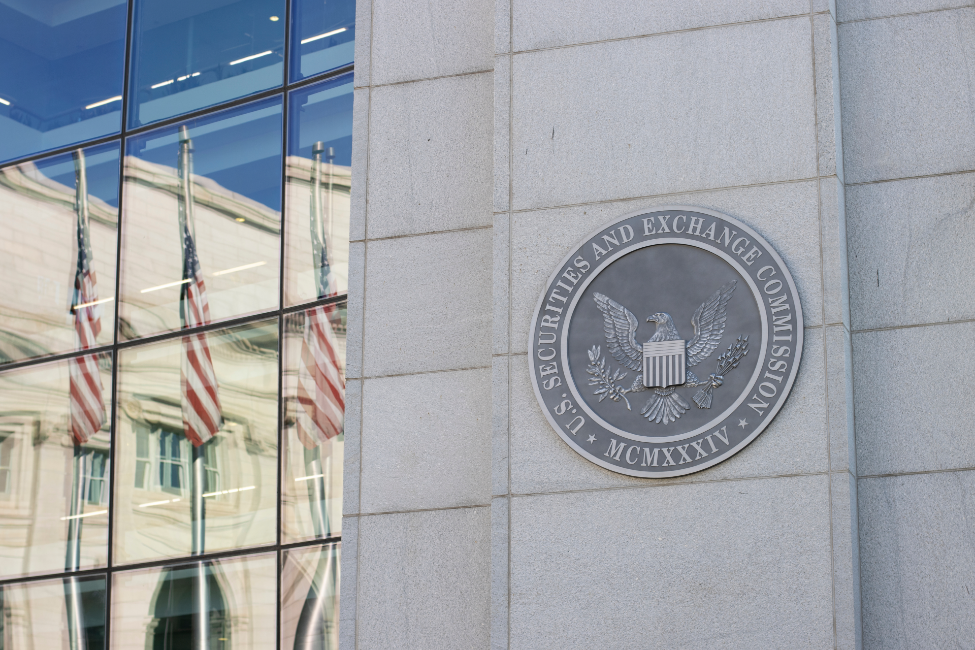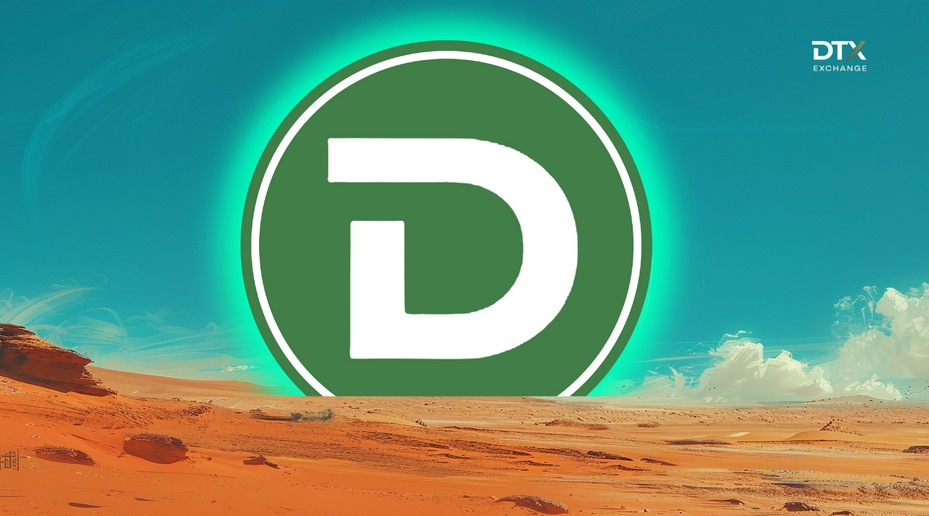DeFi
Cutting-edge technology that continues to disrupt traditional financial models

11
Increasingly emerging among the most innovative technologies in the cryptocurrency sector, decentralized finance (DeFi) is quickly establishing itself as a new paradigm in global finance. And with trillions of dollars in transactions already settled through a multitude of applications available to everyone online, DeFi technology has a bright and disruptive future, provided it can stay on the right side of a regulatory regime of more and more strict.
DeFi leverages distributed ledger technologies (DLT) to offer on-chain financial products and services, such as borrowing, lending, investing, and trading cryptoassets, all without the need for an intermediary traditional centralized. As such, this disintermediate version of traditional finance (increasingly dubbed “TradFi”) enables highly efficient, cost-effective, and automated peer-to-peer financial transactions via smart contracts and decentralized blockchain protocols. The exclusion of a centralized intermediary also means that anyone, anywhere in the world can access the services.
This openness has caused DeFi to explode in popularity, with an entire ecosystem of financial services now beginning to flourish, having freed itself from costly, inefficient and often error-prone intermediaries. Indeed, the total value locked (TVL) of tokens deposited in DeFi applications now hovers around the $90 billion mark, a level not seen since May 2022, when a first frenzy gripped the sector. “DeFi provides internet-native alternatives to popular financial services in the form of decentralized protocols on a blockchain,” according to Jeremy Allaire, chief executive of Circle, which runs the popular stablecoin USD Coin (USDC). “Essentially, this means that anyone with an internet connection can participate in the global financial system, even if they don’t have a bank account.”
Among the most significant developments coming out of the DeFi space are decentralized exchanges (DEXs), such as Uniswap, which use automated liquidity protocols programmed by smart contracts to enable direct peer-to-peer trading without centralized authority. Assets are traded based on relative values using automated market makers (AMMs) powered by algorithms and programmed to buy or sell assets at different prices on an ongoing basis. The Uniswap protocol provides liquidity to the market through liquidity pools of each asset’s tokens locked in smart contracts on the Ethereum blockchain. Liquidity pools are crucial within DeFi because once they are sufficiently populated with specific assets from various providers, other participants can trade against them.
Liquidity providers are incentivized to supply their assets to a liquidity pool by earning rewards that traders typically pay via low trading fees (around 0.3%) for using the token swap protocol. Indeed, the “liquidity mining” trend has seen liquidity providers offering their assets to provide liquidity to DeFi protocols, such as decentralized exchanges, in exchange for newly minted protocol tokens. Not only can this prove extremely lucrative for liquidity providers and more profitable for market participants, but without the need for a centralized authority to be involved in transactions, DEXs ultimately prove more efficient than traditional methods. existing TradFi.
DeFi has also played an extremely important role in popularizing stablecoins, digital currencies that match the value of a traditional fiat currency (such as the US dollar) and are backed by cash and cash-equivalent assets very liquid. Their main appeal within DeFi is that their fixed values allow market participants to earn yields by depositing them into various DeFi protocols without being exposed to the pronounced market volatility faced by other cryptocurrencies, such as bitcoin (BTC) and ether (ETH).
Investors use their fiat currencies to purchase the equivalent value in stablecoins and then deposit them into DeFi protocols offering attractive returns. Indeed, one of the most lucrative activities in the DeFi field is “Yield Farming”, which consists of searching for high-yielding DeFi protocols in which to deposit your cryptocurrencies and/or stablecoins in order to maximize the yields offered.
Centralized stablecoin projects, such as Circle’s USD Coin, involve the project actively ensuring that the value of its token remains consistent with the value of the underlying fiat currency. It thus adjusts its reserves to preserve the ratio with the quantity of minted stablecoins in circulation to ensure that it has funds available for traders wishing to cash out their stablecoin holdings. In contrast, decentralized stablecoin projects, such as MakerDAO’s DAI stablecoin, use algorithms that incentivize market participants to buy or sell tokens in various scenarios to stabilize prices at the underlying fiat values.
Lending protocols, such as Aave and Compound, use blockchain and smart contracts to provide users with the ability to borrow and lend without the need for third-party intervention. A borrower seeking USDC, for example, can pledge crypto (such as ETH) as collateral which the protocol secures until the USDC loan is repaid. The USDC lender, on the other hand, can mine the crypto received by earning interest. However, most lending protocols require overcollateralization before granting a loan in order to protect themselves if the value of the collateral falls below the loan amount. Such loan facilities prove revolutionary by eliminating credit risks and sufficiently overcollateralizing and/or liquidating loans when the collateral ratio falls below a certain threshold.
But as has been the case for much of the rest of the crypto complex, it appears DeFi will not escape regulators’ crosshairs. Indeed, the United States Securities and Exchange Commission (SEC) issued Uniswap a Wells Notice, which is sent to a company before formally filing a lawsuit against it and gives the recipient the opportunity to respond to the allegations prosecution and provide arguments explaining why. the action should not be taken. The SEC had already opened an investigation into Uniswap Labs in 2021, the main developer of the largest DEX in the world, leading to the withdrawal of several tokens from the platform.
“Today’s Wells opinion against @Uniswap is disappointing, but not unexpected from this SEC,” Uniswap General Counsel Marvin Ammori wrote on X, confirming the opinion of the regulator. “If the SEC had authority over our self-deposited, non-intermediated products, it could tell us how to register them. It is not possible, and therefore it is not the case. He provided no clarity or guidance – as several SEC commissioners have stated in multiple dissents. Ammori also said that the Uniswap protocol, web application and wallet “do not meet the legal definitions of a securities exchange or broker” and that the protocol welcomes “crypto regulations – and the clear rule of law we expect in the United States – not arbitrary enforcement. and continued abuse of power.”
With DeFi’s TVL poised to fly again, regulators seem determined to clip its wings. With the SEC filing charges against major exchanges including Binance and FTX, and charges also being filed against Coinbase and Ripple, it could just be that US regulators are now turning their attention to DeFi and DEXs for their investigations.
DeFi
Cryptocurrency and defi firms lost $266 million to hackers in July

In July 2024, the cryptocurrency industry suffered a series of devastating attacks, resulting in losses amounting to approximately $266 million.
Blockchain Research Firm Peck Shield revealed in an X post On August 1, attacks on decentralized protocols in July reached $266 million, a 51% increase from $176 million reported in June.
The most significant breach last month involved WazirX, one of India’s largest cryptocurrency exchanges, which lost $230 million in what appears to be a highly sophisticated attack by North Korean hackers. The attack was a major blow to the stock market, leading to a break in withdrawals. Subsequently, WazirX launched a program in order to recover the funds.
Another notable incident involved Compound Finance, a decentralized lending protocol, which suffered a governance attack by a group known as the “Golden Boys,” who passed a proposal who allocated 499,000 COMP tokens – valued at $24 million – to a vault under their control.
The cross-chain liquidity aggregation protocol LI.FI also fell victim On July 16, a hack resulted in losses of $9.73 million. Additionally, Bittensor, a decentralized machine learning network, was one of the first protocols to suffer an exploit last month, loming $8 million on July 3 due to an attack targeting its staking mechanism.
Meanwhile, Rho Markets, a lending protocol, suffered a $7.6 million breach. However, in an interesting twist, the exploiters research to return the stolen funds, claiming the incident was not a hack.
July 31, reports The Terra blockchain protocol was also hacked, resulting in a loss of $6.8 million across multiple cryptocurrencies. As crypto.news reported, the attack exploited a reentrancy vulnerability that had been identified a few months ago.
Dough Finance, a liquidity protocol, lost $1.8 million in Ethereum (ETH) and USD Coin (USDC) to a flash loan attack on July 12. Similarly, Minterest, a lending and borrowing protocol, saw a loss of $1.4 million due to exchange rate manipulation in one of its markets.
Decentralized staking platform MonoSwap also reported a loss of $1.3 million following an attack that allowed the perpetrators to withdraw the liquidity staked on the protocol. Finally, Delta Prime, another decentralized finance platform, suffered a $1 million breach, although $900,000 of the stolen funds was later recovered.
DeFi
Centralized crypto exchanges are slowly losing ground to their DeFi counterparts

Centralized crypto exchanges are slowly losing ground to their DeFi counterparts, according to an in-depth data analysis conducted by Decrypt.
DeFiLlama’s decentralized exchange (DEX) volume data and CoinGecko’s total cryptocurrency trading volume data show that the percentage of cryptocurrency trading volume occurring on DEXs relative to total trading volume has increased from 4.6% in February to over 7% this month. This is an increase in the share of trading volume driven by DEXs of over 52%.
Source: Adrian Zmudzinski
Kunal Goel, a senior research analyst at Messari, told Decrypt that several factors are fueling the growth in DEX market share. He cited “the growth of meme coins and long-tail assets” as one of the reasons, explaining that they tend to list first on DEXs and only appear on centralized exchanges much later.if they last that long.
“The onchain user experience has improved with low fees and high throughput on Solana and Ethereum L2,” he added, highlighting advancements making decentralized finance (DeFi) solutions increasingly easier to use.
DeFiLlama data further shows that over the past 24 hours, DEX volume accounted for 22% of total trading volume. The crypto price aggregator notes that this percentage is meant to represent the dominance of decentralized exchanges over aggregated decentralized exchanges and centralized exchanges.
So far in 2024, DEX volume has seen a slow and steady increase.
CEX and DEX trading volume increased from $133.5 billion in January to $179.5 billion this month, an increase of about 34%. The year-to-date high was recorded in March, when CEX and DEX volumes saw a sharp increase, reaching $4.8 trillion and $266.89 billion, respectively.
Goel noted that at the time, “Bitcoin hit new all-time highs in March and trading activity is generally positively correlated with price and sentiment.” Looking ahead, he expects centralized exchanges to move on-chain and disrupt their own business models before others can. He added that “Base and BNB Chain are the most prominent examples of this.”
TradingView also shows a DeFi market cap dominance chart, in percentage terms. Currently at 3.86%, it fell from 4.47% on January 1 and hit a 2024 high of 4.81% on February 25. Goel noted that this was unexpected since “DEX volumes are a key driver of DEX value, so it’s a bit contradictory.”
Challenge is an umbrella term for a group of financial tools built on a blockchain, including DEXs, exchanges that operate primarily on-chain. The primary goal of DeFi is to allow anyone with internet access to lend, borrow, and bank without relying on intermediaries.
Similarly, the main goal of DEXs is to allow anyone with internet access to trade or even provide liquidity in exchange for a stake. DeFi and DEXs are one of the main areas of focus in decentralized application (dapp) development, which have seen considerable adoption this year.
Edited by Stacy Elliott.
DeFi
Pump.Fun Overtakes Ethereum in Daily Revenue: A New Leader in DeFi

In a remarkable turn of events, Pump.Fun, a memecoin launchpad, has surpassed all other platforms in the decentralized finance (DeFi) sector, achieving the highest gross revenue in the last 24 hours. According to data from DeFiLlama, Pump.Fun amassed $867,429 during this period, surpassing Ethereum’s $844,276. This achievement underscores the growing influence of memecoin infrastructure within DeFi.
Pump.Fun Revenue Milestones
The impressive revenue numbers go beyond daily performance. Pump.Fun is generating $315 million in annualized revenue, averaging $906,160 per day over the past week. This revenue surge is largely due to the recent memecoin frenzy, with Solana-based memecoins being particularly popular among on-chain enthusiasts. The platform’s user-friendly interface allows non-technical users to quickly launch their own tokens, spending as little as $2 without needing to provide any initial liquidity.
How Pump.Fun works
Pump.Fun’s operating model is designed to facilitate the use and rapid launch of tokens. Users can create new tokens in minutes, which are then allowed to trade along a bonding curve until they reach a market cap of approximately $75,000. At this point, the bonding curve is burned on Raydium, establishing a secure liquidity pool. The platform generates revenue through a 1% fee on transactions made on the platform. However, once a token is bonded and burned on Raydium, Pump.Fun stops charging this fee.
Ethereum: Traditional Power
Despite its daily revenues, Ethereum remains a cornerstone of the DeFi ecosystem. It is the blockchain of Ether, the second-largest cryptocurrency with a market cap of $395 billion. Ethereum powers many applications and digital assets, backing over $60 billion worth of smart contracts. Revenue generation on Ethereum is done through transaction fees, called gas, which are paid in ETH for executing transactions and smart contracts.
Comparative analysis of revenue models
While Ethereum’s revenue model relies on gas fees for transactions and smart contract executions, Pump.Fun takes a different approach. By enabling easy and low-cost token launches, Pump.Fun caters to a broad audience, including non-technical users. This inclusiveness, combined with the excitement surrounding memecoins, has led to rapid revenue growth. The 1% transaction fee ensures continued revenue generation until the token transitions to Raydium, creating a sustainable business model.
Memecoin frenzy
The recent rise in popularity of memecoins has been a major contributor to Pump.Fun’s success. Memecoins, particularly those based on Solana, have captivated the DeFi community, generating substantial activity on platforms like Pump.Fun. This trend highlights a shift in DeFi dynamics, where niche platforms catering to specific interests can achieve significant revenue milestones.
Future prospects
Pump.Fun’s recent successes suggest a potential shift in the DeFi landscape. As the platform continues to attract users with its simple token launch process and low-cost entry point, it could solidify its position as a leader in the DeFi space. The memecoin phenomenon shows no signs of slowing down, indicating that platforms like Pump.Fun could continue to see robust growth.
In conclusion, Pump.Fun’s ability to surpass Ethereum in terms of daily revenue underscores the evolving nature of the DeFi space. By providing a user-friendly platform for launching memecoins, Pump.Fun has tapped into a lucrative niche, demonstrating the potential for niche platforms to thrive alongside traditional blockchain giants like Ethereum. This development signals a broader trend toward diversification and innovation within the DeFi ecosystem, with new entrants challenging established players through unique value propositions and targeted services.
DeFi
$10 Billion Venture Firm May Target 10x Opportunities in Ripple (XRP) and This DeFi Token

According to recent reports, one of the largest venture capital firms is looking for new opportunities in the cryptocurrency space as Bitcoin (BTC) attempts to break its all-time high and start a new bull run in the cryptocurrency market. They are balancing risk with low-risk, low-reward and high-risk, high-reward opportunities.
The first investment candidate is a top cryptocurrency, Ripple (XRP); it doesn’t have much growth potential because it’s already a large cap. Another scenario the firm is targeting is DTX ExchangeThe new hybrid exchange is expected to revolutionize the foreign exchange industry. According to analysts, its growth potential is immense and the risk is also very limited due to its low price.
Market is bullish as Trump wants to make US a Bitcoin (BTC) superpower
Over the past 30 days, Bitcoin (BTC) has increased by about 10%, and one of the catalysts for this price increase has been Donald Trump recently speaking out as a crypto pro. Presidential candidate Donald Trump has promised to make the United States the world leader in cryptocurrencies if elected in November. Speaking at the Bitcoin2024 conference in Nashville, Trump compared Bitcoin (BTC) to the steel industry of 100 years ago, highlighting its potential.
Trump’s plans include firing SEC Chairman Gary Gensler and immediately creating a “Presidential Advisory Council on Bitcoin (BTC) and Cryptocurrencies.” He stressed the importance of American leadership in the cryptocurrency space, saying, “I am laying out my plan to ensure that the United States is the cryptocurrency capital of the planet and the Bitcoin (BTC) superpower of the world.”
$600 Million Worth of Ripple (XRP) to Be Released in August
Ripple (XRP), the company behind the XRP Ledger blockchain and its native token Ripple (XRP), unlocks up to 1 billion tokens on the first day of every month. Since 2017, they have used several major escrow wallets, including Ripple (XRP) (24) and Ripple (XRP) (25), to evenly distribute these monthly unlocks.
However, Ripple (XRP) often relocks a large portion of newly issued XRP. For example, on June 1, Ripple (XRP) relocked 800 million XRP but still sold about 300 million XRP, worth $182 million at the time.
While Ripple (XRP) releases up to 1 billion XRP tokens each month, the actual amount released into circulation is typically much lower due to this re-escrow process, as noted in a 2017 XRP Ledger blog post.
DTX Exchange Follows Bitcoin (BTC) Path
The main target of large private equity firms is the DTX exchange (DTX), the reason being a clearly high utility like Bitcoin (BTC). This project has attracted global attention thanks to its exceptional pre-sale performance, offering early buyers a 100% return on investment and raising over $1 million. Projections suggest that this figure will reach $2 million by the end of August 2024.
DTX Exchange offers a revolutionary hybrid trading platform, combining the best features of centralized (CEX) and decentralized (DEX) exchanges. Traders can enjoy a seamless experience with access to over 120,000 asset classes, no KYC verification upon registration and ultra-fast transaction speeds of 0.04 seconds.
These benefits have attracted traders to this new cryptocurrency exchange. Currently, in Phase 2 of its pre-sale, DTX Exchange is listed at $0.04, which is double its starting price of $0.02. Market analysts predict that the upcoming listing of DTX Exchange on the Level 1 CEX in late 2024 could trigger a 100x bullish rally, making DTX Exchange the top cryptocurrency exchange to watch.
Learn more:
Disclaimer: The statements, views and opinions expressed in this article are solely those of the content provider and do not necessarily represent those of Crypto Reporter. Crypto Reporter is not responsible for the reliability, quality and accuracy of the materials contained in this article. This article is provided for educational purposes only. Crypto Reporter is not responsible or liable, directly or indirectly, for any damage or loss caused or alleged to be caused by or in connection with the use of or reliance on any content, goods or services mentioned in this article. Do your research and invest at your own risk.
-

 Videos9 months ago
Videos9 months agoCrypto News: Bitcoin, ETH Price, CPI Print, PYTH, WIF & MORE!!
-

 Videos9 months ago
Videos9 months agoCrypto News: Bitcoin Price, ETF, ETH, WIF, HNT & MORE!!
-

 DeFi9 months ago
DeFi9 months agoMetasphere Labs announces follow-up event regarding
-

 Videos9 months ago
Videos9 months agoSolana price potential?! Check out THIS update if you own SOL!!
-

 Videos8 months ago
Videos8 months agoWho Really CONTROLS THE MARKETS!! Her plans REVEALED!!
-

 DeFi6 months ago
DeFi6 months agoPump.Fun Overtakes Ethereum in Daily Revenue: A New Leader in DeFi
-

 News6 months ago
News6 months agoNew bill pushes Department of Veterans Affairs to examine how blockchain can improve its work
-

 DeFi6 months ago
DeFi6 months agoDegens Can Now Create Memecoins From Tweets
-

 News6 months ago
News6 months agoLawmakers, regulators to study impact of blockchain and cryptocurrency in Alabama • Alabama Reflector
-

 Bitcoin6 months ago
Bitcoin6 months ago1 Top Cryptocurrency That Could Surge Over 4,300%, According to This Wall Street Firm
-

 Ethereum8 months ago
Ethereum8 months agoComment deux frères auraient dérobé 25 millions de dollars lors d’un braquage d’Ethereum de 12 secondes • The Register
-

 Videos8 months ago
Videos8 months agoCryptocurrency News: BTC Rally, ETH, SOL, FTM, USDT Recover & MORE!
















